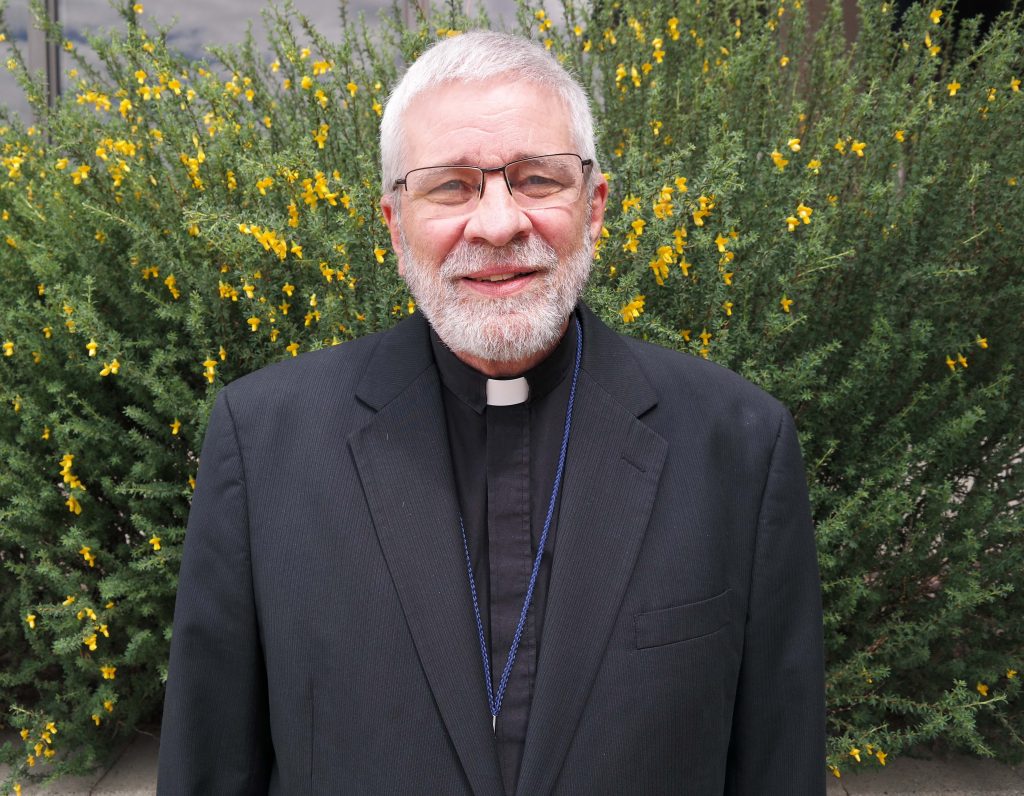Theology of Sound
 by Timothy Teuscher
by Timothy Teuscher
“Let the Word of Christ dwell in you richly, teaching and admonishing one another with all wisdom…” (Colossians 3:16a). It was these words of St. Paul, as well as similar passages in Holy Scripture, that informed my previous column on the subject of ‘Sound Theology’—namely, that what is preached and taught in our congregations is to be Bible-based and Christ-centered, orally read and proclaimed, and literally heard with our ears.
But the Apostle doesn’t end there. He adds: “…and as you sing psalms, hymns, and spiritual songs with thankfulness in your hearts to God” (3:16b). This is why one condition of membership of congregations, pastors, and deacons in our synod is “exclusive use of doctrinally pure agenda, hymn books, and catechisms in church and school” (LCC Constitution V.4).
This is so not only in connection with the words that are sung in our various service orders and hymns—which, by the way, come from virtually “every nation, from all tribes and people and languages” (Revelation 7:9) and from every time-period over the past 2,000 years or so—but also in connection to the music itself. It gives us a ‘theology of sound,’ so to speak. Martin Luther expressed it this way: “The gift of language combined with the gift of song was only given to man to let him know that he should praise God with both word and music, namely by proclaiming the Word of God through music and by providing sweet melodies with words.”
Take, for instance, the Psalms that St. Paul mentions above—the hymnal, as it were, of God’s Old Testament people. In Psalm 6, a penitential psalm, we read this superscription or direction as to how the psalm was to be sung, as well as the tune: “To the choirmaster: with stringed instruments, according to the Sheminith. A Psalm of David.” In a similar vein, the Lutheran Service Book says: “The psalms are pointed for singing…. Any psalm can be sung to any tone. It is best, however, that the tone, which can range from cheerful and bright to somber and austere, be appropriate to the text” (LSB xxvi).
Music ‘appropriate to the text’ is the underlying and guiding principle when it comes to “psalms, hymns, and spiritual songs.”
Music ‘appropriate to the text’ is the underlying and guiding principle when it comes to “psalms, hymns, and spiritual songs.” Consider, for example, many of the Easter hymns; such as ‘Jesus Christ is Risen Today’ (LSB 457) or ‘He’s Risen, He’s Risen’ (LSB 480) or ‘This Joyful Eastertide’ (LSB 482). Easter, of course, celebrates Christ’s resurrection from the grave. Not only do the words of those Easter hymns proclaim this message, but the music does too–starting with lower notes and gradually ascending to higher ones.
Or consider a couple of negative examples, drawn from the season of Lent. One technically could, I suppose, sing the somber, meditative hymn, ‘When I Survey the Wondrous Cross’ (LSB 425), to the familiar tune of the common doxology, ‘Praise God, from Whom All Blessings Flow’ (LSB 805). But the tune would be less-then-fitting given the words of the hymn. Likewise, to sing the hymn “Savior, When in Dust to Thee’ (LSB 419) to the joyful tune of the thanksgiving hymn, ‘Come, Ye Thankful People, Come” (LSB 892), would be a discordant and conflicting sound compared to the words we are singing.
In a recently published book from Concordia Publishing House entitled Lutheran Music and Meaning, the author makes this concluding comment: “Music in Lutheran worship is not only about expressing joy, though that is part of what music may accomplish within the varied contexts of liturgy, Church Year, and lectionary. Music in Lutheran worship is not merely an accompaniment to times of reflection or meditation, though that is a part of what music may accomplish within the context of liturgy, Church Year, and lectionary. Music—particularly by way of hymns, vocal/choral music, and hymn based instrumental music—takes on specific theological meaning in Lutheran worship. That is a distinctive characteristic of Lutheran music, one that congregational singers and listeners do well to regard and understand, and one that Lutheran pastors and church musicians will always seek to nurture.”
 In other words, our focus must be not just sound theology but also theology of sound as well. Or, as the 4th century church father, St. Basil, puts it: “Blending the delight of melody with doctrine in order that through the pleasantness and softness of the sound we might unawares receive what was useful in the words.”
In other words, our focus must be not just sound theology but also theology of sound as well. Or, as the 4th century church father, St. Basil, puts it: “Blending the delight of melody with doctrine in order that through the pleasantness and softness of the sound we might unawares receive what was useful in the words.”
———————
Rev. Dr. Timothy Teuscher is President of Lutheran Church–Canada (LCC).





